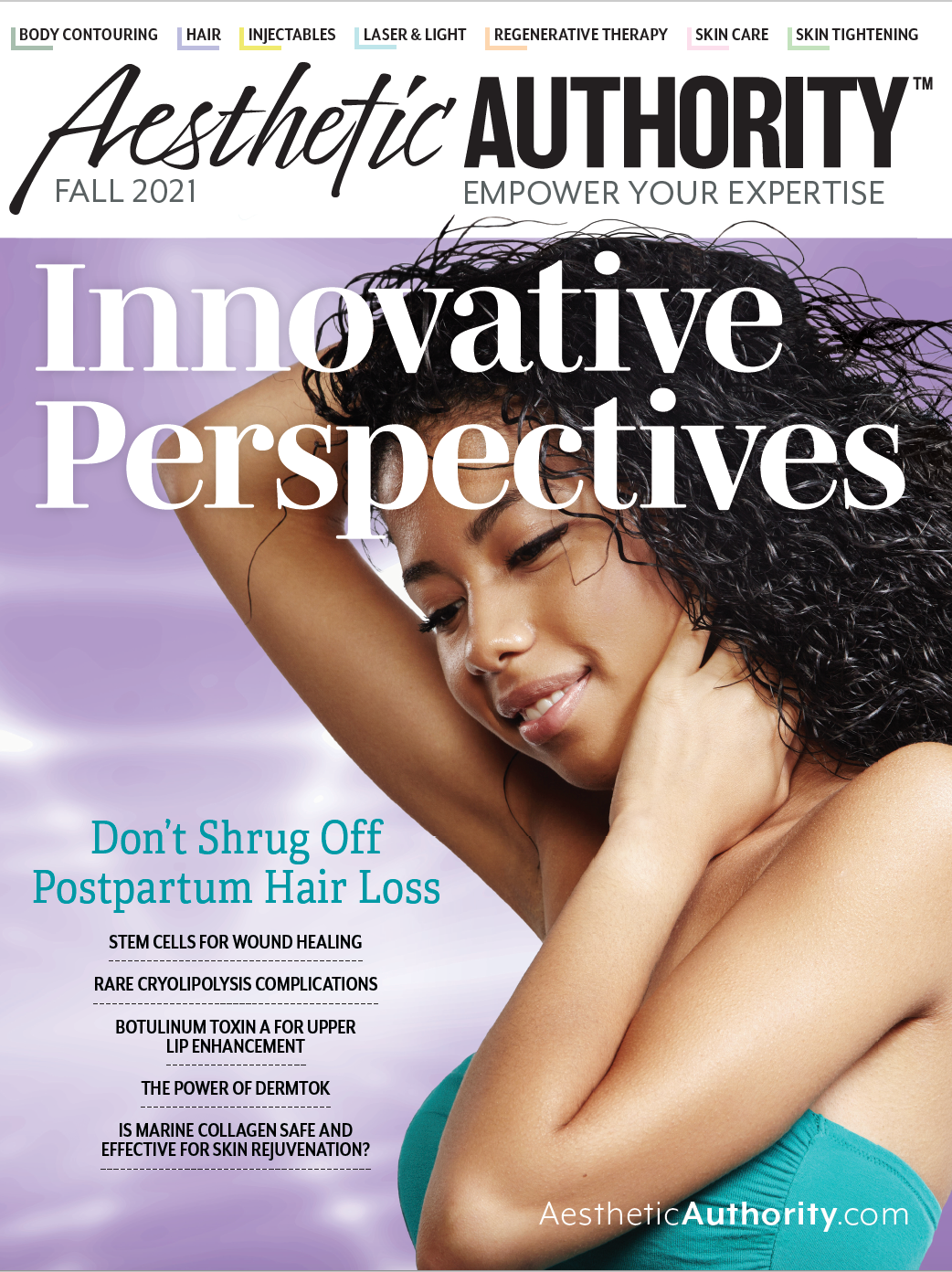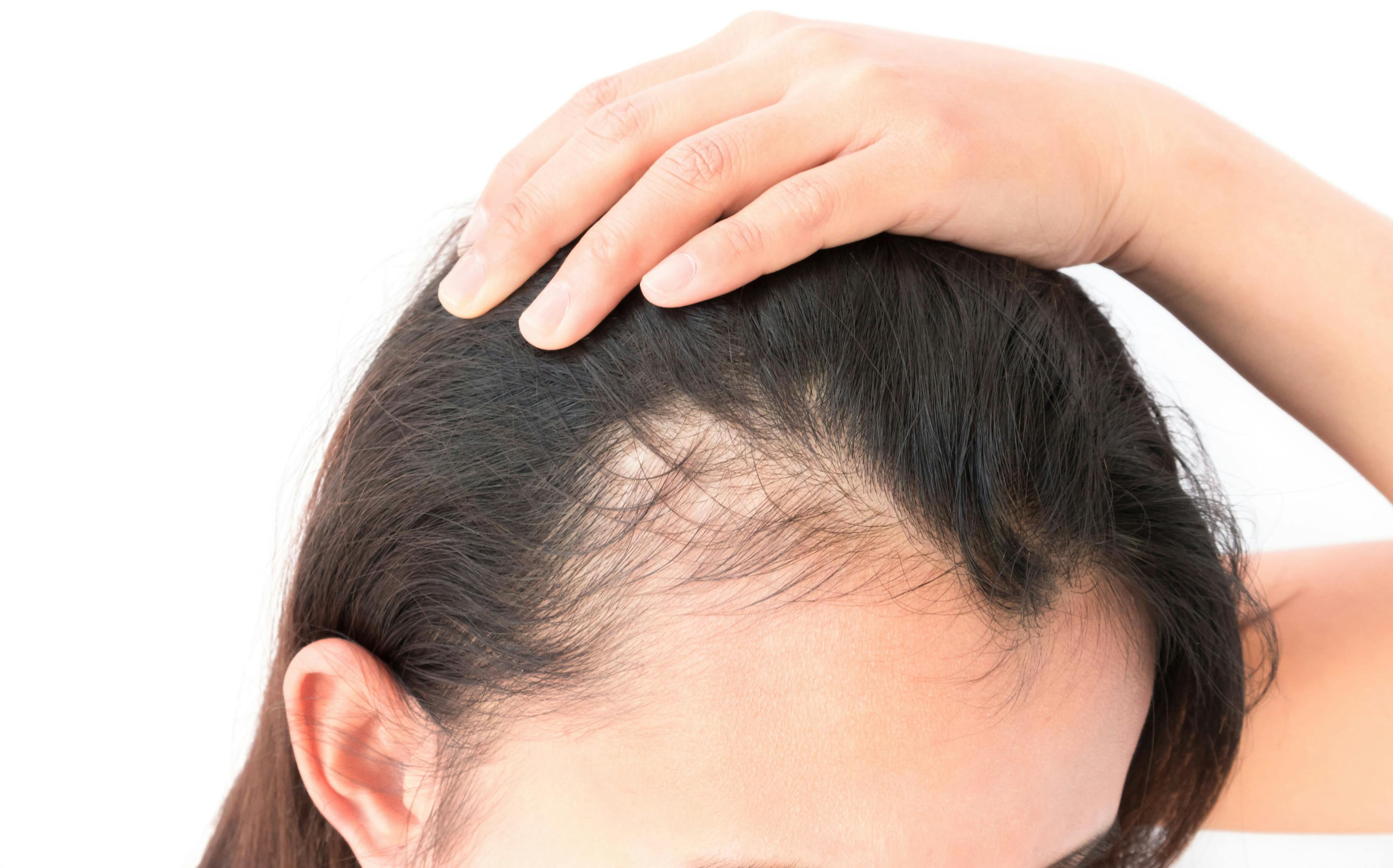- Acne
- Actinic Keratosis
- Aesthetics
- Alopecia
- Atopic Dermatitis
- Buy-and-Bill
- COVID-19
- Case-Based Roundtable
- Chronic Hand Eczema
- Chronic Spontaneous Urticaria
- Drug Watch
- Eczema
- General Dermatology
- Hidradenitis Suppurativa
- Melasma
- NP and PA
- Pediatric Dermatology
- Pigmentary Disorders
- Practice Management
- Precision Medicine and Biologics
- Prurigo Nodularis
- Psoriasis
- Psoriatic Arthritis
- Rare Disease
- Rosacea
- Skin Cancer
- Vitiligo
- Wound Care
Publication
Article
Aesthetic Authority
Adipose-Derived Stem Cells for Wound Healing
In an Aesthetic Surgery Journal study, adipose-derived stem cells are examined in regard to their role in regenerative wound healing and how today’s regulatory environment is revolving around them.
An Aesthetic Surgery Journal study recently investigated adipose-derived stem cells (ADSCs) for wound healing in an effort to understand their role in both the clinical and regulatory environment.1
ADSCs are a form of mesenchymal stromal/stem cells (MSCs). They are heterogenous cells that can be isolated from the stromal compartment of many different tissue types. ADSCs are known to activate local stem cell niches, promoting revascularization, reducing oxidative stress, and modulating immune responses. They can also be harvested in large amounts with minimal donor site morbidity, according to study investigators.
The International Society for Cellular Therapy (ISCT) has created minimal criterial for MSCs:
- plastic adherence in standard culture conditions;
- expression of CD73, CD90, and CD105 without expression of CD45, CD34, CD19, CD14, CD11b, and HLA-DR surface antigens; and
- differentiation into adipogenic, osteogenic, and chondrogenic lineages under appropriate in vitro conditions.
A study in Stem Cells and Development concluded that MSCs could be used for regenerative cell therapy because of the potential for multilineage differentiation, influence on oxidative stress, and the creation of many soluble mediators that have benefits for the body’s immune system. MSCs from tissues may be closely related to tissue regenerations.2
Adipose tissue is a complex endocrine organ that plays a role in energy balance, insulin sensitivity, and inflammation.3 There are 2 types of adipose tissue, white and brown, and although they are derived from the embryonic mesoderm, they are different in location, volume, and function.4
White adipose tissue contains mature adipocytes and while they take up over 90% of the tissue volume, the adipocytes are less than 50% of the total cell number. This portion, which includes a mixture of mature, progenitor, and stem cells, must then be separated from the heterogenous cellular population and stromal vascular fraction (SVF).5
A crude SVF contains about 30% to 40% ADSCs. These can be isolated in multiple ways such as plastic adherence in culture, Ficoll density gradient centrifugation, erythrocyte lysis buffer treatment, mechanical dissociation, immunomagnetic bead cell sorting, and fluorescence-activated cell sorting, the study investigators wrote.
Challenges of the ADSCs include the way they express specific genes, making them different from MSCs. The consensus position on the ADSC immunophenotype is that the surface antigen expression profile may not meet the minimal criteria for MSC status set by the ISCT, according to the study.
The variability of CD34 expression can make it hard to interpret because of the amount of immunogen subtypes and the choice of antibody may have an effect on signal intensity. There are various ways to isolate ADSC along with different culture conditions that also affect antigen expression profiles. Also, cultured ADSCs are unlikely to represent a completely homogenous population. Heterogeneity can cause issues for quality control.
To resolve these issues, one would identify an ADSC-specific surface marker. However, although there have been attempts to do this, none has been widely accepted. Bone marrow (BM)-MSCs are the most well-defined adult stem cell but ADSCs may be superior for regenerative cell therapies for wound healing. These reasons include ADSCs being less invasive and have been shown to exhibit more marked angiogenic and immunomodulatory effects. Additionally, age is not a factor in the amount of ADSC a patient has.
Currently, only 1 clinical trial has investigated the efficacy of local ADSC administration for cutaneous wound healing, concluding that it does lead to improved wound healing outcomes.6 No clinical wound healing trails using the allogeneic ADSCs have been conducted, but there is potential for off-the-shelf treatment using ex vivo expanded ADSCs for chronic lesions. Of 11 trials using allogeneic ADSCs for applications besides wound healing, there have been no cases of graft rejection, but the full implications of this result are yet to be fully understood, according to the study in Aesthetic Surgery Journal.1
ADSCs cells promote tissue regeneration with their ability to differentiate into many mesenchymal lineages, though age and gender may play a factor in the efficiency. They may modify target cell behavior by changing the cell interactions and still have an effect even after direct contact is lost.
There is also evidence that MSC conditioned medium (CM) may replicate the effects of MSC wound healing. ADSC-CM has shown to upregulate human dermal fibroblast proliferation, migration, and extracellular matrix deposition in vitro.1
Exosomes are an important part of the MSC secretome, and their proteins—mRNA, miRNA, DNA, and lipids—reflect their cell type of origin. Exosomes of MSC upregulate intracellular signaling pathways, which have been proven to have a role in tissue regeneration and may be quantifiable and evaluated for safety, dosage, and potency.
MSC exosomes can be administered allogeneically and stored safety at 68°F without toxic cryoprotective agents, which gives them potential to be manufactured at a commercial scale. MSC exosome therapies may be superior to MSC-CM because of the protection of important molecules from degradation, being stored and delivered in a concentrated form, and the absence of components or supplements not appropriate for human use.7 However, research is still needed to create a better safety and efficacy profile.
The regulatory environment is complicated. In Europe, ADSCs can be treated as cell/tissue therapies or medicines. The US has seen closures of stem cell clinics, along with a statement from the FDA Center for Biologics Evaluation and Research.
“Stem cell products hold significant potential to improve human health. However, that potential will never be fully realized if careful scientific work and thoughtful clinical investigation supporting the safety and efficacy of these products are not conducted,” according to the FDA statement. “The FDA is committed to helping advance the safe and effective development of novel stem cell products. We look forward to working with those who share our goal of bringing safe and effective products to market to benefit individuals in need.”
The regulatory environment worldwide is taking a closer look at the therapy. The Royal Australian College of Surgeons, in 2016, noted that the Therapeutic Goods Administration saw a huge uptick in the number of autologous stem cell treatments, but at that time, there was no evidence to support their effectiveness and while it prompted a review, the review remains unpublished.
After 3 cases of women being blinded by stem cell injections intended to treat macular degeneration8, and the FDA’s decision to close many stem cell clinics, there may be pressure to follow its lead.1 The FDA released 2 guidance documents related to stem cell treatment, 1 to clarify the “same surgical procedure”9 and the other concerning the definitions of “minimal manipulation” and “homologous use.”10
“We have to do all of the safety studies and truly make it into an investigational new drug application [NDA]. The problem with that is that every time we use somebody’s stem cells, it’s a new drug every time and the expense of doing a new drug [application] every time is exorbitant,” explains Jack Zamora, MD, Cosmetic Surgery and Aesthetics, Denver, Colorado.
The FDA guidance for “homologous use” highlighted the importance for the anticipated function of the cells, not just the anatomical site of application. The FDA gave the example of using adipose tissue for contouring a soft tissue defect as homologous use, as cushioning and support are the basic functions of adipose tissue. However, using adipose tissue for cartilage or tendon repair, according to the guidance, is nonhomologous because tissue regeneration and immunomodulation are not basic functions of adipose tissues, according to the current scientific consensus.
The 361 product designation is defined as a minimally manipulated product, such as placental tissue or umbilical cord tissue. It can be prepackaged with FDA good manufacturing standards (GMS) and premarket approval is not needed, according to Zamora.
361 products that meet all the criteria outlined in 21 CFR 1271.10(a) are regulated as human cells, tissues, and cellular and tissue-based products (HCT/Ps) and are not required to be licensed or approved by the FDA; they are instead regulated by Section 361 of the Public Health Service (PHS) Act.11
However, the issue is that these products are not as pure as they could be because among the stem cells are red and white blood cells, the inclusion of which can cause immune reactions. Another issue is how well each company is sticking to the GMS set by the FDA and making sure the tissue has not been infected, Zamora said.
There are 351 designations that do not meet all the criteria of a 361 product and are considered investigational new drugs. Through Vitro Biopharma, Zamora has helped launch a phase 1-11a, randomized, double-blind, placebo-controlled study on the safety and efficacy of therapeutic treatment with AlloRX Stem Cells in adult patients diagnosed with COVID-19.12
“COVID-19 has opened the door for stem cells to be used in the [United States] legally,” Zamora says. “We’ve already treated patients around the [United States] with IV stem cells under the emergency order for COVID-19.” Zamora says he thinks we could see widespread stem cell use in the US in less than 10 years.
Cell therapies are likely to increase the importance of regenerative wound healing and regulation will increase accordingly. This will likely lead to a change in the way current cell treatments are delivered, and regulation is as much an opportunity as it is a threat, as is having pathways to approval in place and advice for researchers available, Zamora says. Additionally, more research is needed.
“I think the FDA is doing what they’re supposed to do,” Zamora says, noting that the FDA has a responsibility to help those who are not sick and prevent them from becoming sick from any FDA-regulated products. Additionally, it’s important to stop those who may have gotten sick from these products from becoming increasingly ill.
Disclosures:
Zamora is the CEO of Vitro Biopharma.
References:
- Luck J, Weil BD, Lowdell M, Mosahebi A. Adipose-derived stem cells for regenerative wound healing applications: understanding the clinical and regulatory environment. Aesthet Surg J. 2020;40(7):784-799. doi:10.1093/asj/sjz214
- Strioga M, Viswanathan S, Darinskas A, Slaby O, Michalek J. Same or not the same? Comparison of adipose tissue-derived versus bone marrow-derived mesenchymal stem and stromal cells. Stem Cells Dev. 2012;21(14):2724-2752. doi:10.1089/scd.2011.0722
- Majka SM, Barak Y, Klemm DJ. Concise review: adipocyte origins: weighing the possibilities. Stem Cells. 2011;29(7):1034-1040. doi:10.1002/stem.653
- Peirce V, Carobbio S, Vidal-Puig A. The different shades of fat. Nature. 2014;510(7503):76-83. doi:10.1038/nature13477
- Najar M, Rodrigues RM, Buyl K, et al. Proliferative and phenotypical characteristics of human adipose tissue-derived stem cells: comparison of Ficoll gradient centrifugation and red blood cell lysis buffer treatment purification methods. Cytotherapy. 2014;16(9):1220-1228. doi:10.1016/j.jcyt.2014.05.021
- Marino G, Moraci M, Armenia E, et al. Therapy with autologous adipose-derived regenerative cells for the care of chronic ulcer of lower limbs in patients with peripheral arterial disease. J Surg Res. 2013;185(1):36-44. doi:10.1016/j.jss.2013.05.024
- Bhang SH, Lee S, Shin JY, Lee TJ, Jang HK, Kim BS. Efficacious and clinically relevant conditioned medium of human adipose-derived stem cells for therapeutic angiogenesis. Mol Ther. 2014;22(4):862-872. doi:10.1038/mt.2013.301
- McGinley L. Three women blinded by unapproved stem-cell ‘treatment’ at South Florida clinic. Washington Post. March 15, 2017. Accessed July 22, 2021. https://www.washingtonpost.com/news/to-your-health/wp/2017/03/15/three-women-blinded-by-unapproved-stem-cell-treatment-at-south-florida-clinic/
- US Food and Drug Administration. Same Surgical Procedure Exception under 21 CFR 1271.15(b): questions and answers regarding the scope of the exception. November 2017. Accessed July 22, 2021. https://www.fda.gov/files/vaccines%2C%20blood%20%26%20biologics/published/Same-Surgical-Procedure-Exception-under-21-CFR-1271.15%28b%29-%C2%A0Questions-and-Answers-Regarding-the-Scope-of-the-Exception.pdf
- US Food and Drug Administration. Regulatory considerations for human cells, tissues, and cellular and tissue-based products: minimal manipulation and homologous use. July 2020. Accessed July 22, 2021. https://www.fda.gov/downloads/BiologicsBloodVaccines/GuidanceComplianceRegulatoryInformation/Guidances/CellularandGeneTherapy/UCM585403.pdf
- Hildreth C. How does the U.S. FDA regulate cell therapies? (351 vs 361 products). BioInformant. February 21, 2018. Accessed August 16, 2021. http://https%253A%252F%252Fbioinformant.com%252F351-vs-361-products%252F
- Vitro biopharma receives FDA authorization to conduct a clinical trial using AlloRX stem cells to treat covid-19. BioInformant. April 8, 2021. Accessed August 16, 2021. http://https%253A%252F%252Fbioinformant.com%252Fvitro-biopharma-allorx-covid19%252F

Newsletter
Like what you’re reading? Subscribe to Dermatology Times for weekly updates on therapies, innovations, and real-world practice tips.























